The Great Depression (1929–1939) was one of the most challenging periods in American history, marked by widespread unemployment, economic hardship, and food shortages. Families had to stretch every dollar, making the most of whatever ingredients they could find. The result? A collection of resourceful, simple, and often surprisingly delicious recipes that helped people survive the toughest of times.
From creative ways to use stale bread to protein-packed meals on a dime, the foods of the Great Depression tell the story of resilience and ingenuity. In this post, we’ll explore six of the most iconic Depression-era recipes, their history, and how you can make them today.
The Great Depression & Its Impact on Food
The Great Depression, which began with the stock market crash of 1929, led to widespread unemployment, business failures, and economic devastation. By 1933, nearly 25% of Americans were out of work, and those who still had jobs often faced drastic wage cuts. With money scarce, families had to stretch every ingredient, get creative with meals, and rely on government aid to survive.

Food availability and consumption changed dramatically. Before the Depression, many American households enjoyed meat, dairy, and fresh produce regularly. But as wages disappeared, these items became luxuries, and families turned to cheaper alternatives. Staples like beans, potatoes, bread, and canned goods became the backbone of meals. Creative substitutions—like vinegar replacing lemon juice or crackers replacing apples in pie—became common survival tactics.
To make matters worse, the early 1930s saw the Dust Bowl, a series of devastating droughts that hit the Great Plains. This environmental disaster destroyed crops, turned once-fertile farmland into barren dust fields, and forced thousands of farming families to migrate in search of work. The food crisis deepened as wheat, corn, and meat prices soared, leaving even more Americans struggling to feed their families.
For many, the only food available came from government relief programs or charitable organizations. Soup kitchens, famously run by Al Capone in Chicago, fed the homeless and unemployed. The government provided commodities like flour, lard, powdered milk, and canned goods, which families used to make simple but filling meals like Hoover Stew and cornbread & milk.
Despite these hardships, Depression-era cooking left a lasting impact on American food culture. It reinforced the values of waste reduction, home gardening, and making the most of simple ingredients—lessons that remain relevant today. Many of these recipes, born out of necessity, became comfort foods that families still enjoy generations later.
1. Hoover Stew
A Budget-Friendly Pasta Soup
Named after President Herbert Hoover, this stew became a common meal in soup kitchens and struggling households. It was a simple, filling dish made with whatever was available—usually pasta, canned tomatoes, and hot dogs or ground meat.
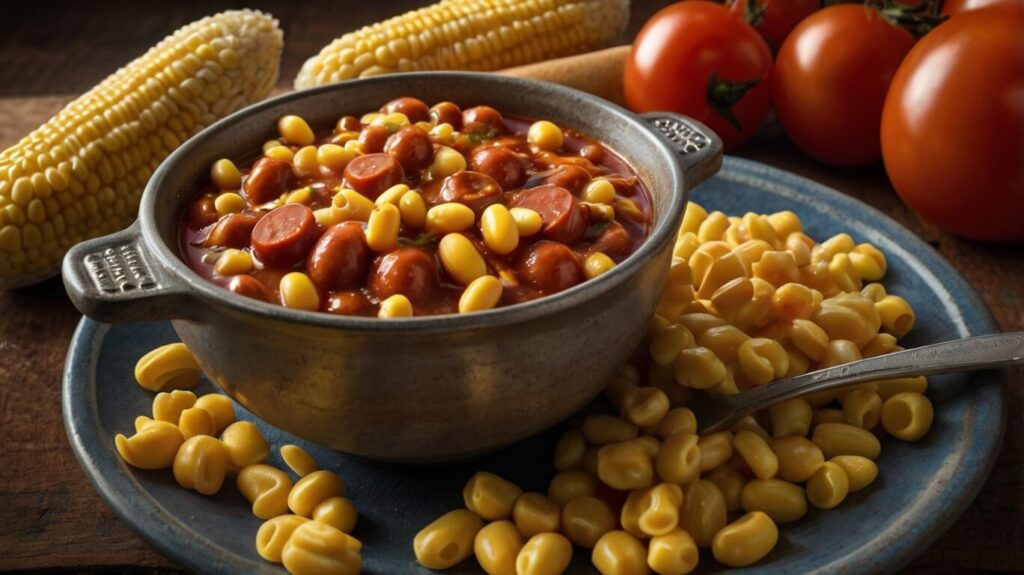
Historical Source: “The Household Searchlight Recipe Book” (1931) – This Depression-era cookbook featured practical, budget-conscious meals, many resembling Hoover Stew.
Ingredients:
- 2 cups elbow macaroni
- 1 can (14 oz) diced tomatoes
- 1 cup canned corn
- 2 hot dogs, sliced (or any leftover meat)
- 1 cup water or broth
- Salt and pepper to taste
Instructions:
- Cook the macaroni according to package instructions; drain.
- In a pot, combine tomatoes, vegetables, hot dogs, and water/broth. Simmer for 10 minutes.
- Add the cooked macaroni and stir. Season with salt and pepper.
- Serve hot and enjoy this Depression-era classic.
2. Depression-Era Peanut Butter Bread
A No-Yeast, No-Egg Bread Recipe
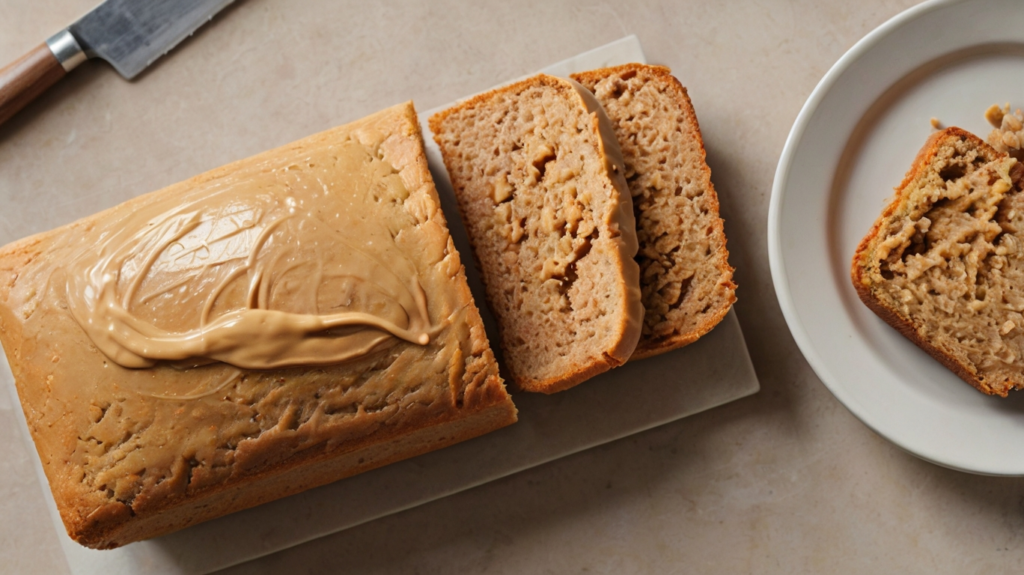
During the Depression, eggs, milk, and butter were expensive. This peanut butter bread required none of them, making it an easy, protein-rich solution.
Historical Source: “Five Roses Cook Book” (1932) – Published by the Canadian flour company Five Roses, this book featured eggless, milkless, and butterless recipes perfect for hard times.
Ingredients
- 2 cups flour
- ¼ cup sugar
- 4 tsp baking powder
- 1 cup milk (or water for a dairy-free version)
- ½ cup peanut butter
Instructions
- Preheat oven to 350°F (175°C). Grease a loaf pan.
- In a bowl, mix flour, sugar, and baking powder.
- Add milk and peanut butter; stir until combined.
- Pour batter into the pan and bake for 45-50 minutes until golden brown.
- Let cool before slicing—perfect with a little extra peanut butter spread on top!
3. Vinegar Pie
The Poor Man’s Lemon Pie
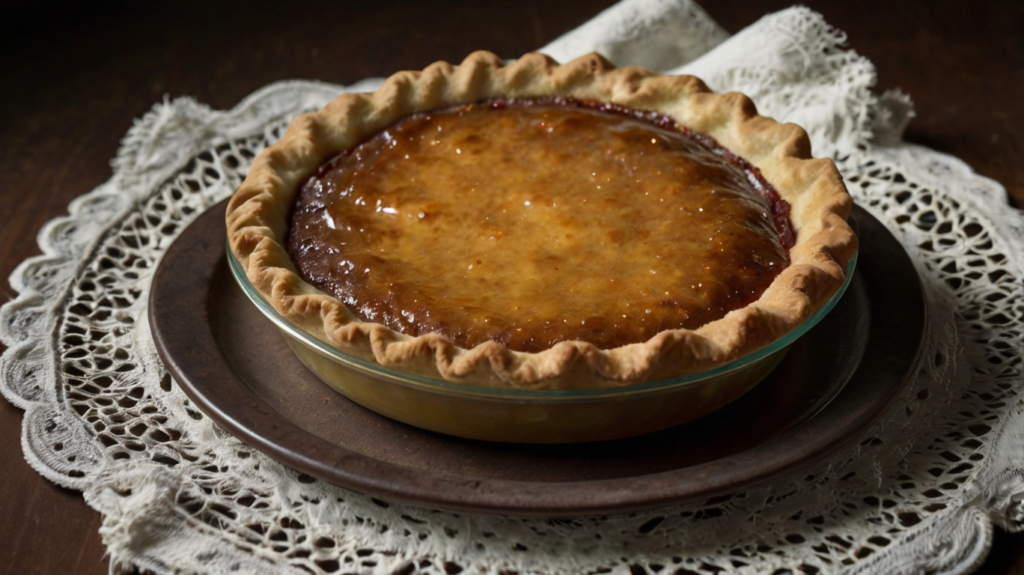
Vinegar pie was a clever way to mimic lemon pie when citrus was too expensive or unavailable. The vinegar provided a tangy flavor, balanced by sugar and butter.
Historical Source: “The Priscilla Cook Book for Everyday Housekeeping” (1913) – This cookbook featured practical, low-cost desserts that became essential during the Depression.
Ingredients
- 1 pre-made pie crust
- 1 cup sugar
- 2 tbsp flour
- 1 cup water
- 3 tbsp apple cider vinegar
- 1 tbsp butter
- 1 tsp vanilla extract
Instructions
- Preheat oven to 350°F (175°C).
- In a saucepan, mix sugar and flour, then add water and vinegar. Heat and stir until thickened.
- Remove from heat; stir in butter and vanilla.
- Pour into the pie crust and bake for 30 minutes.
- Let cool completely before serving—tastes surprisingly sweet and tart!
4. Dandelion Salad
Foraging for Free Food
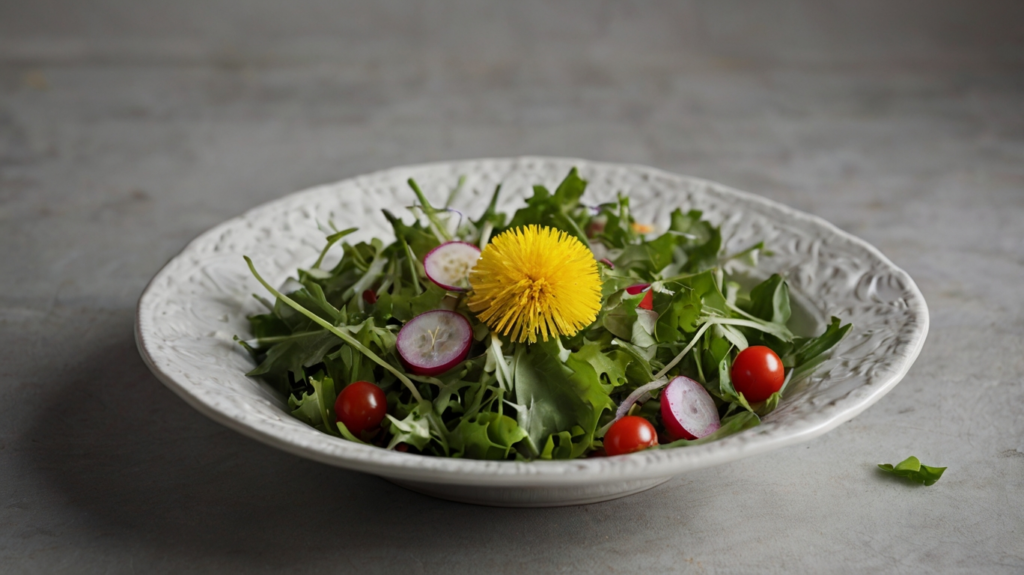
Dandelions, often considered weeds today, were a valuable free food during the Depression. Their leaves were used to make fresh, vitamin-packed salads.
Historical Source: “The Joy of Cooking” (1931, Irma S. Rombauer) – This cookbook featured frugal recipes, including dishes made from foraged greens.
Ingredients
- 2 cups young dandelion greens
- 2 tbsp vinegar
- 1 tbsp olive oil or bacon fat
- ½ tsp salt
- 1 boiled egg, sliced (optional)
- 1 sliced radish (optional)
Instructions
- Wash and dry the dandelion greens.
- Toss with vinegar, oil, and salt.
- Top with sliced radish and boiled egg slices for protein.
5. Mock Apple Pie (Made with Crackers!)
An Apple Pie Without Apples
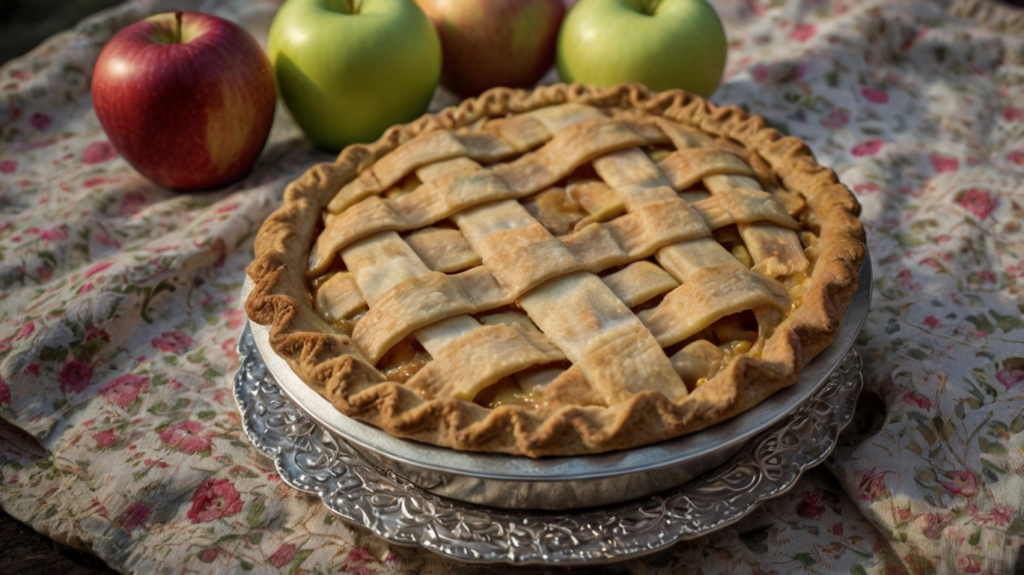
When apples were scarce, people invented a pie using crackers, sugar, and cinnamon to mimic the taste of apple filling.
Historical Source: “The Settlement Cook Book” (1903, revised through the 1930s) – This cookbook contained early versions of Mock Apple Pie.
Ingredients
- 1 pre-made pie crust
- 36 Ritz crackers, crumbled
- 2 cups water
- 1 cup sugar
- 2 tsp cream of tartar
- 1 tsp cinnamon
- 1 tbsp butter
Instructions
- Preheat oven to 375°F (190°C).
- In a saucepan, mix sugar, water, and cream of tartar. Boil for 5 minutes.
- Add crumbled crackers, cinnamon, and butter.
- Pour into the pie crust and bake for 30 minutes.
6. Cornbread & Milk
A Simple, Filling Meal
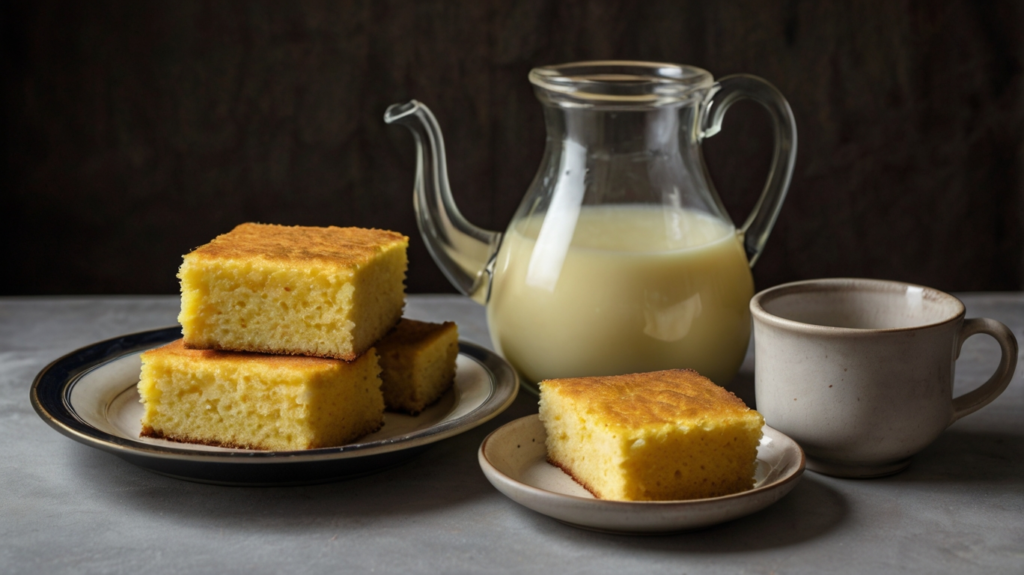
This Depression-era dish was often eaten for breakfast or dinner when nothing else was available.
Historical Source: “The Boston Cooking-School Cook Book” (Fannie Farmer, 1930 edition) – One of the most influential cookbooks of the time, featuring cornbread recipes.
Ingredients
- 1 piece of cornbread
- 1 cup milk
Instructions
- Crumble cornbread into a bowl.
- Pour milk over it and eat with a spoon.
- (Optional) Add a drizzle of honey or sugar for extra flavor.
Resilience on a Plate: The Lasting Impact of Great Depression Cooking
The Great Depression was more than just a financial crisis—it reshaped the way people approached food, cooking, and survival. In an era of scarcity and uncertainty, families stretched every ingredient to its limit, learned to make do with what they had, and redefined what it meant to be resourceful in the kitchen. Simple, hearty dishes like Hoover Stew, Depression-Era Bread, and Mock Apple Pie became staples, not just out of necessity, but out of sheer ingenuity. These meals, often made from cheap, shelf-stable ingredients, filled stomachs and provided comfort in a time when both were hard to come by.
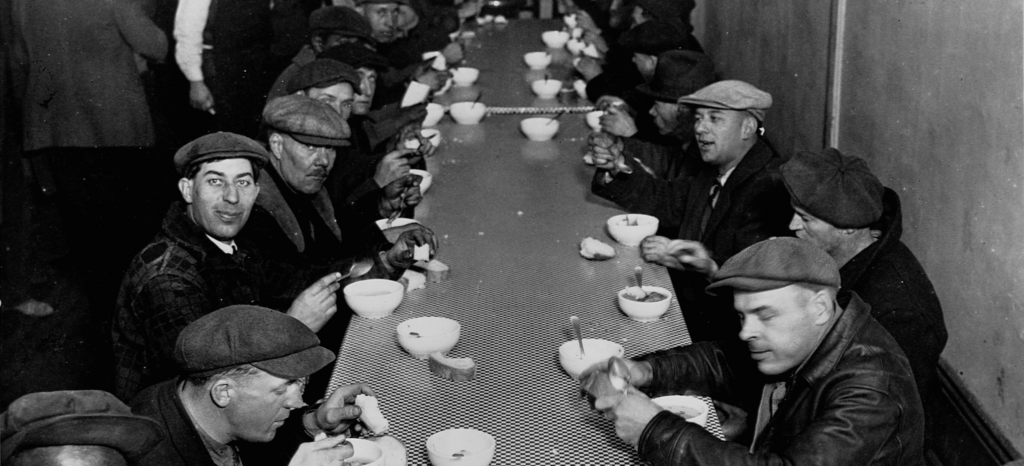
Though the economic hardships of the Great Depression eventually passed, its influence on American food culture remains strong. Many of the survival techniques developed during the 1930s—home canning, nose-to-tail eating, and waste-free cooking—continue to be valued today, particularly in times of economic downturn. Even Depression-era recipes like bean soup, cornbread, and simple casseroles have endured, not only because they are affordable but because they remind us of a time when communities came together, shared what little they had, and found creative ways to put meals on the table.
Looking back at what people ate during the Great Depression is a powerful reminder of how food is more than just sustenance—it’s history, resilience, and a reflection of the times. The lessons from this era continue to resonate, showing us that no matter the circumstances, creativity in the kitchen and a strong sense of community can carry us through even the toughest challenges. Whether we realize it or not, the resourcefulness of Depression-era cooking still shapes how we think about food today, proving that the spirit of resilience never goes out of style.